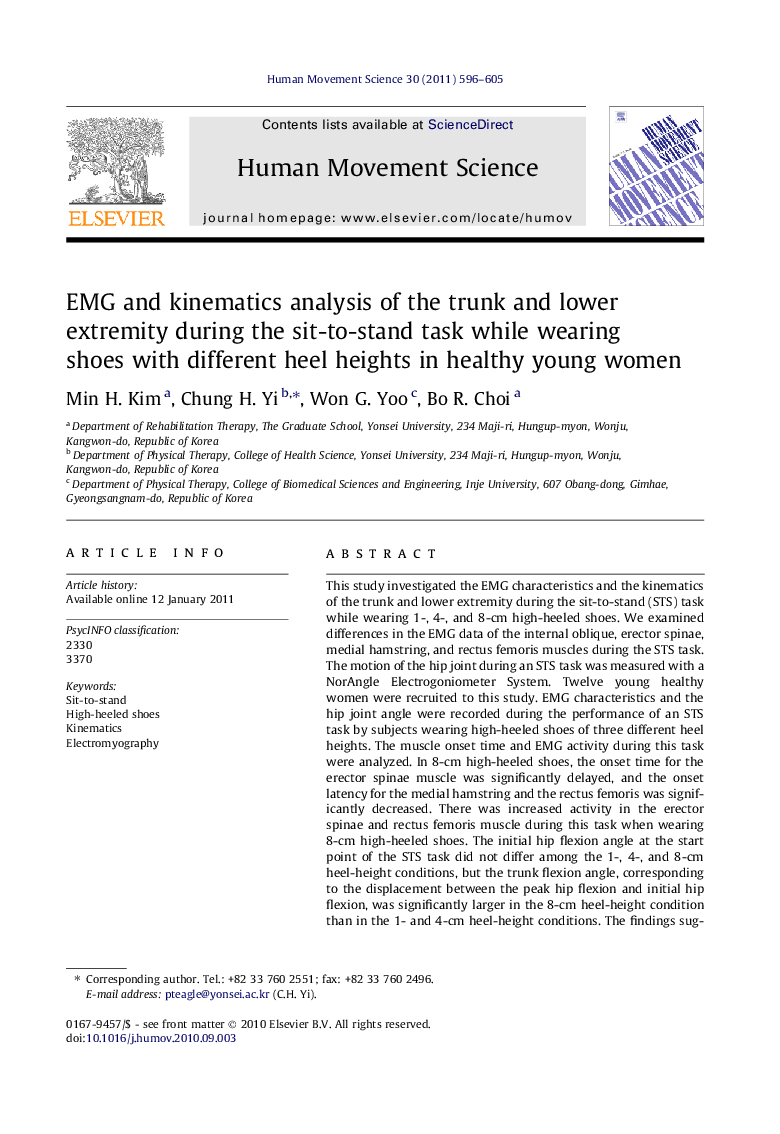| Article ID | Journal | Published Year | Pages | File Type |
|---|---|---|---|---|
| 928594 | Human Movement Science | 2011 | 10 Pages |
This study investigated the EMG characteristics and the kinematics of the trunk and lower extremity during the sit-to-stand (STS) task while wearing 1-, 4-, and 8-cm high-heeled shoes. We examined differences in the EMG data of the internal oblique, erector spinae, medial hamstring, and rectus femoris muscles during the STS task. The motion of the hip joint during an STS task was measured with a NorAngle Electrogoniometer System. Twelve young healthy women were recruited to this study. EMG characteristics and the hip joint angle were recorded during the performance of an STS task by subjects wearing high-heeled shoes of three different heel heights. The muscle onset time and EMG activity during this task were analyzed. In 8-cm high-heeled shoes, the onset time for the erector spinae muscle was significantly delayed, and the onset latency for the medial hamstring and the rectus femoris was significantly decreased. There was increased activity in the erector spinae and rectus femoris muscle during this task when wearing 8-cm high-heeled shoes. The initial hip flexion angle at the start point of the STS task did not differ among the 1-, 4-, and 8-cm heel-height conditions, but the trunk flexion angle, corresponding to the displacement between the peak hip flexion and initial hip flexion, was significantly larger in the 8-cm heel-height condition than in the 1- and 4-cm heel-height conditions. The findings suggest that excessive heel height has the potential to induce muscle imbalance during the STS task.
